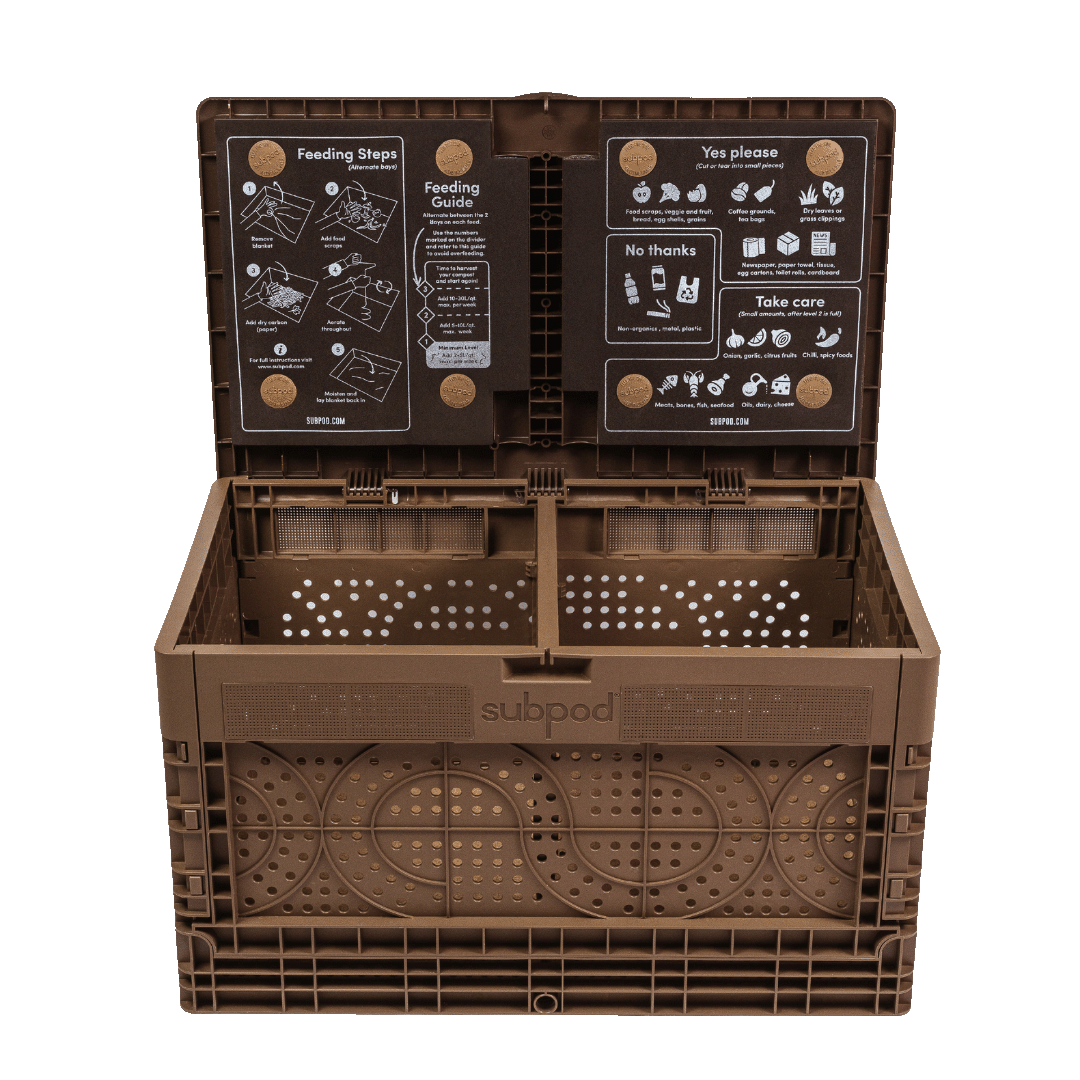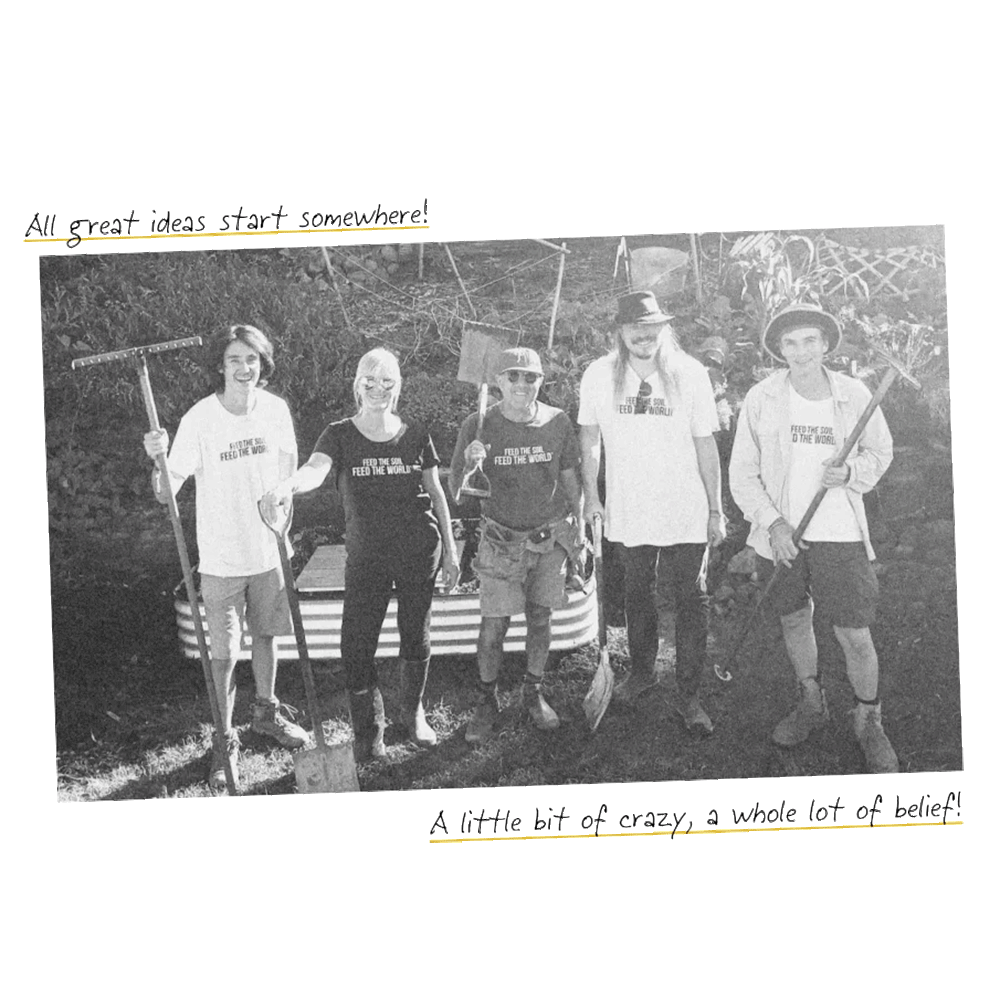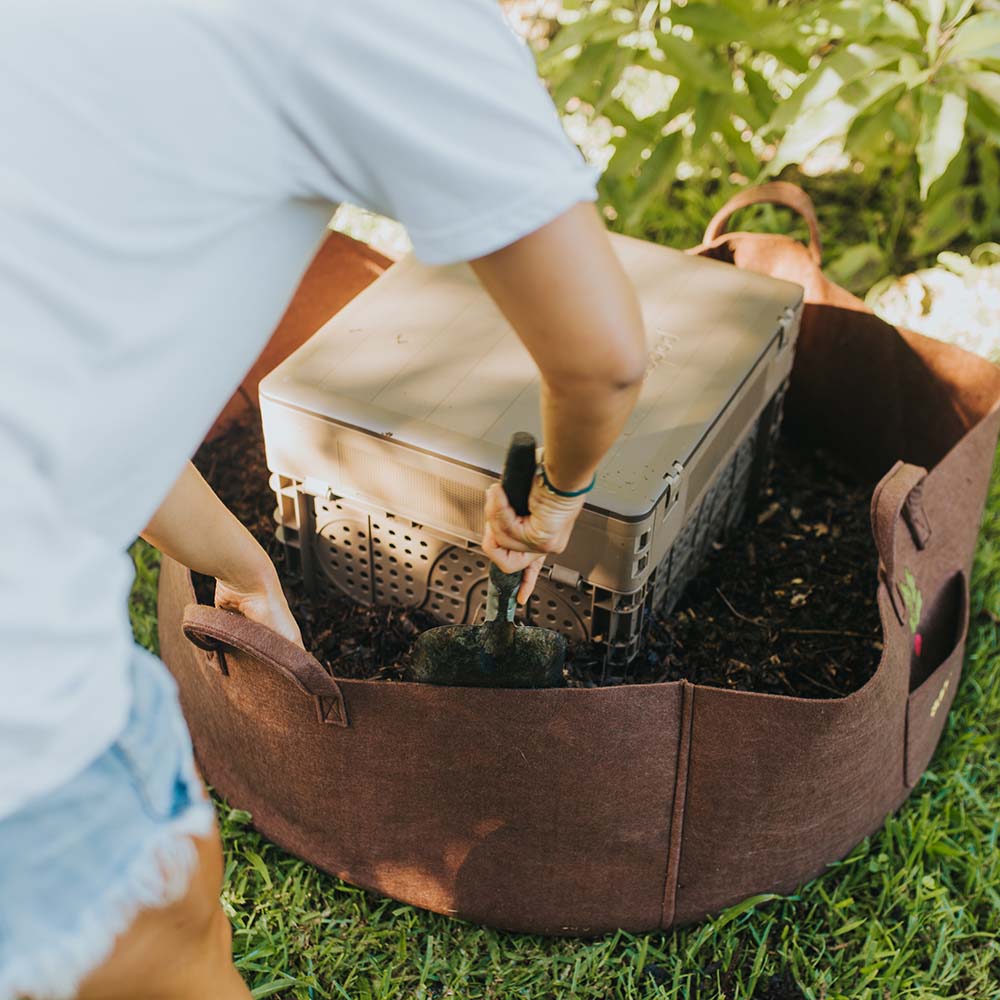Fill out the quiz below.
Find your perfect compost solution
Why is composting important?
A Global Challenge
All indicators predict a continued increase in human population and a decrease in viable land and water availability, which will only deepen the environmental strain caused by current food and waste systems. This complex and multi-faceted environmental crisis cannot be solved with a single solution.
People across the globe will need to make many significant lifestyle changes to alleviate the human impact on our environment. Collectively, we must learn to:
- use fewer resources.
- use the resources we do consume more efficiently.
- find beneficial ways to use waste products to more closely mimic the cycles found in nature.
Where to begin? Try composting!
Composting is a technique for transforming food waste and other organic matter into a nutrient-rich material. Once it's fully composted, the material resembles the humus found in soil that is created naturally as organic matter decomposes.
Benefits of Composting
People have long recognized the many benefits of composting, including:
- It decreases the amount of food and organic waste entering landfills.
- When compost is incorporated into soil, it increases nutrient availability, improves soil structure, decreases soil erosion, increases water retention, and promotes plant growth.
- Composting is a sustainable gardening practice that turns organic matter into a valuable soil amendment.
- When implemented on a large scale, composting has the potential to make a significant impact on the amount of waste generated by a community.
Traditional compost piles rely on a careful balance of the right quantity and quality of fresh and dried materials in order to promote safe and effective decomposition. Creating these ideal conditions can be challenging. Many gardeners struggle to maintain the proper moisture and aeration of their pile — yet these are critical for the pile to reach the temperatures needed for decomposing organisms to thrive and optimum decomposition to occur. Despite the best of intentions, many homeowners, schools, and community gardens end up with smelly "rot piles" rather than true compost piles.
Worm Composting
Vermicomposting, also called worm composting, enlists the help of worms to break down food and organic matter into castings (worm “poop”). Most vermicompost systems rely on special red worms that are well-suited to the task. However, these worms are sensitive to temperature and humidity extremes, and in many climates, worm bins must be placed indoors or in protected locations. Unfortunately, indoor worm bins pose their own challenges — the earthy odor and potential to attract annoying fruit flies, to name a few — with the result that many people are reluctant to install them in their indoor spaces.
The Subpod Solution
The Subpod Composting System addresses the challenges posed by traditional compost piles and worm bins, allowing more people to adopt composting practices. The Subpod is a specially crafted worm bin suitable for installing outdoors, either in-ground or in raised beds. The soil surrounding the bin helps buffer the environment for the worms, and the outdoor placement is a welcome alternative for people resistant to an indoor worm bin.
What makes Subpod different from other composting systems?
Subpod is an in-ground worm farm, the first ever of its kind! Above ground compost systems are often difficult to maintain and attract pests. Worm farms that are above ground also fail when they get too hot or cold – but not Subpod. Subpod sits 90% below the soil level in your garden, so the compost worms that live inside can come and go freely (nourishing the soil directly). The soil insulates your compost and protects your worms from harsh weather, so you can keep composting no matter the season!
- It allows you to compost directly in your garden allowing the worms and microbes to distribute nutrients into the soil.
- Because you’re composting in the soil, your system is insulated → which means you can compost in a variety of climates
- Subpod sits 90% below ground, which deters pests and predators
- The worms are able to move freely between the Subpod module and the surrounding garden which creates a worm friendly environment
- The Subpod has a unique modular design, which allows multiple systems to be installed in one bed and cater to larger volumes of waste.
We designed Subpod to deal with all the common issues associated with traditional compost systems:
- It’s aerobic, using odourless microbes to speed up the composting process
- The ventilation panels keep it smell-free with fresh air
- It doubles as a garden seat, subtly hidden amongst your plants
Is composting easy?
With Subpod = Yes
Composting in a traditional way takes a lot of time and knowledge. You have to create the right conditions for the organic matter to break down and not just simply rot. Most people try the traditional way and end up giving up as they find it too difficult, smelly and attracts pests.
Subpod takes 5 mins a week to maintain and comes with all the basics of composting printed in the lid. It's free from pests and smells.
What can I compost?
You can compost a much bigger variety of materials in Subpod than in other worm farm systems! See the full list below:
FOOD WASTE ✅
Most food waste can be composted in Subpod without worry. Fruit and vegetable scraps, eggshells (crush them first), coffee grounds, used tea leaves, spoiled plant-based milks, grains, pastas, breads, nuts (and their shells), seeds, pits, husks and so on. Small amounts of meat, seafood, dairy foods, citrus, onion and garlic may also be added. Subpod can also process spicy herbs, peppers and oils but it’s best to introduce these slowly in small amounts at first, and only once your worms are fully established (after around three months).
PAPER & CARD ✅
Most scrap paper and cardboard can be added to Subpod, as long as it’s not laminated or super glossy. Again, the smaller the pieces, the better. Junk mail, office paper, bills, envelopes (no plastic windows), post-it notes. Paper plates, tissues, egg cartons, paper cupcake liners, baking paper, even card and paper packaging is fine.
NATURAL FIBRES ✅
Cotton wool balls and pads, tampons, toilet paper cores and even natural latex condoms and gloves can go into Subpod. Old clothing, face washers, napkins, tablecloths and very old towels can be used as long as they are made from natural fibres like cotton, tencel, linen, hemp or wool (no polyester, nylon, acrylic or blends) – just shred them into small pieces first. Washer and dryer lint is okay too, as long as it comes only from clothing made from natural fibres.
WOOD AND BAMBOO ✅
Sawdust (no paint) is great. Toothpicks, disposable wood, bamboo and bioplastic cutlery and crockery can be composted, along with dead matches, bamboo skewers, garden prunings (cut 'em up small), and charcoal from the fireplace – as long as you wash off the ash which is too alkaline for Subpod.
HUMAN AND ANIMAL WASTE ✅
Human hair and nail trimmings, used facial tissue, used cotton bandages and sanitary items can all be composted in Subpod, as long as they are made from 100% natural fibres. Pet hair of all kinds is fine, along with soiled newspaper and hay cage liners and faeces from vegetarian pets and livestock (rabbits, guinea pigs, hamsters, cows and horses). Dog and cat faeces are NOT suitable for Subpod if you’re eating the plants growing around it. But fine if you want to have a separate one for this purpose.
NOT COMPOSTABLE 🛑
You cannot compost non-organics such as plastic, tin cans, cigarettes, building waste, toxic waste, glass, or any other similar materials in Subpod.




